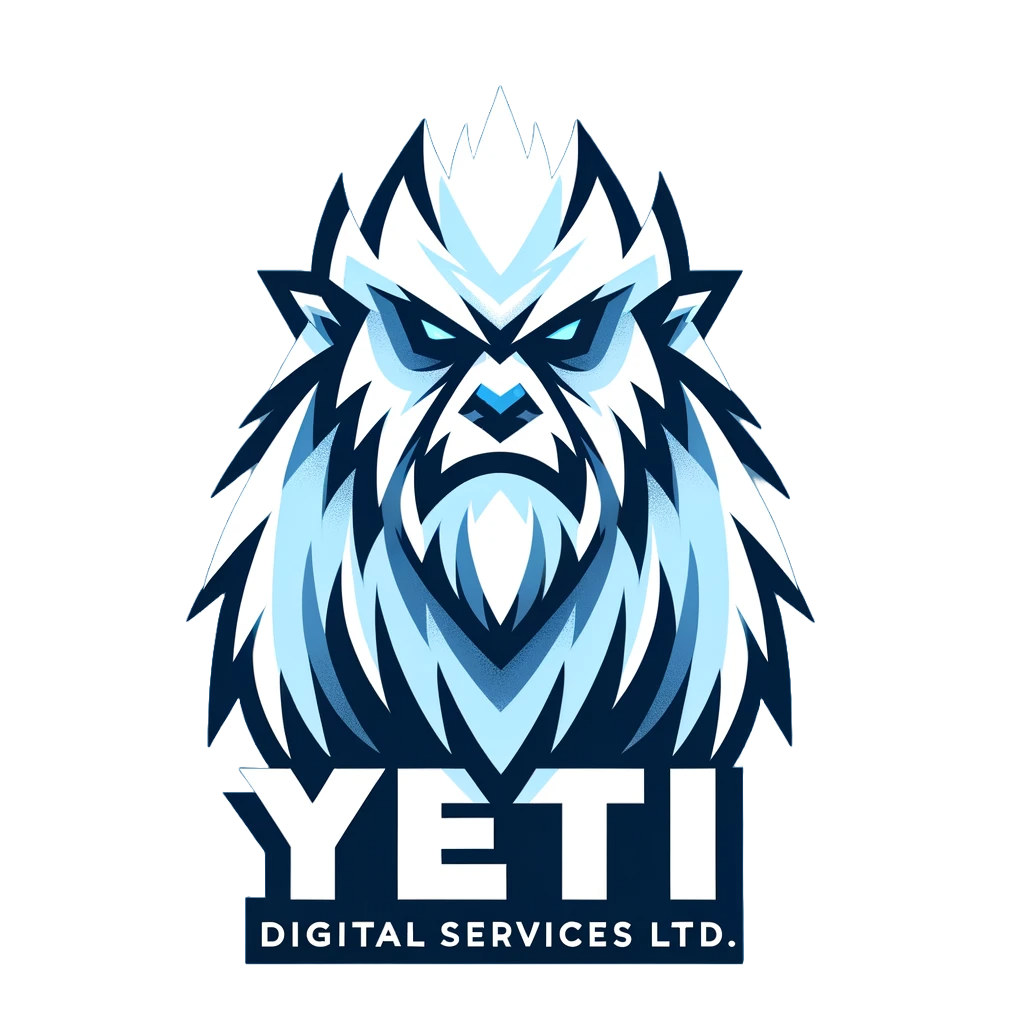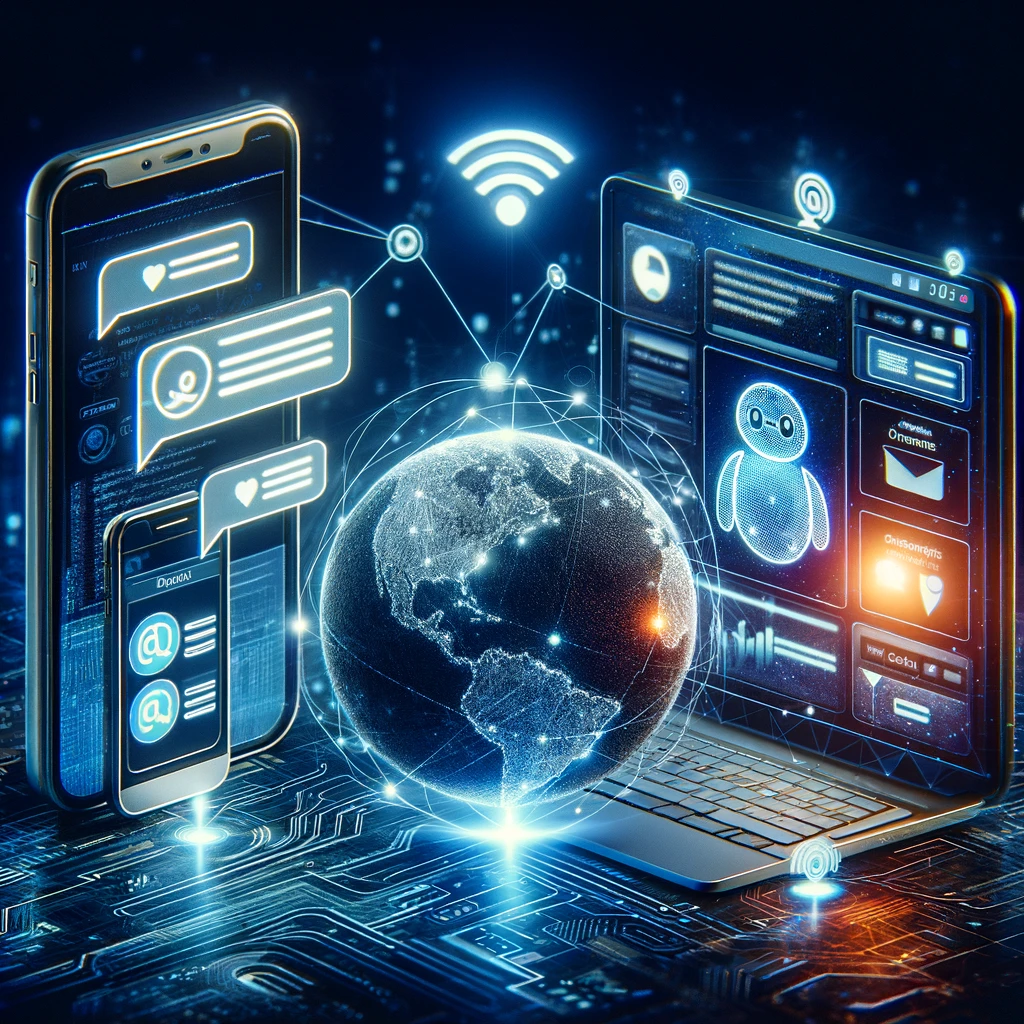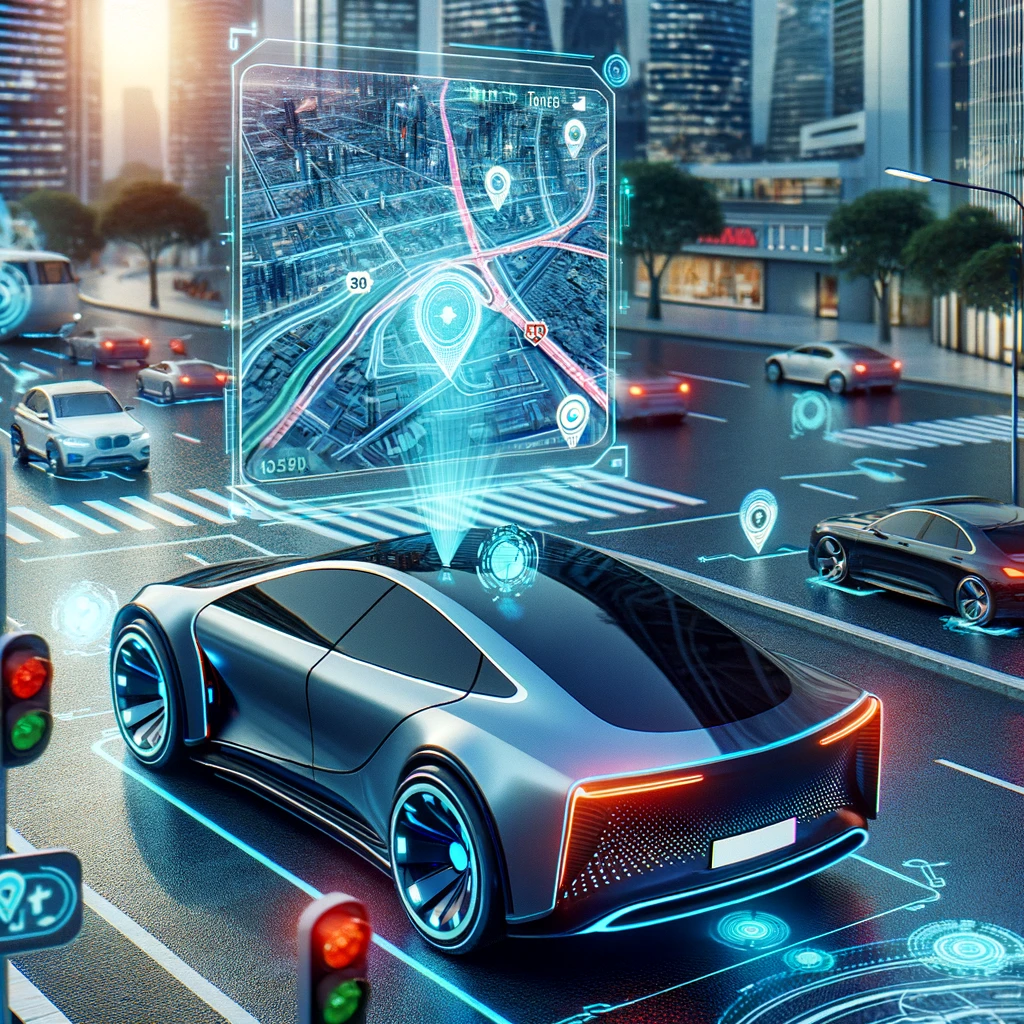Table of Contents
ToggleUnderstanding the Basics of Chatbot Development
Definition and concept of chatbots
Chatbots, these remarkable computer programs, are designed to mimic human-like conversations with users through text—or voice-based interfaces. They harness the power of artificial intelligence, natural language processing, and machine learning to not only understand user inquiries but also provide relevant responses and perform tasks. This is the exciting world of chatbot development, where the potential is limitless.
Chatbots, whether rule-based or AI-powered, offer a range of benefits. They can be deployed across various platforms, such as messaging apps, websites, and mobile applications, to provide 24/7 assistance, streamline customer support, and enhance user experiences. This makes them a valuable tool in today’s digital world.
The role of AI and ML in chatbot development
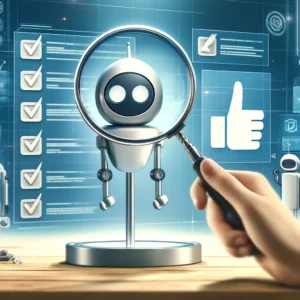 Artificial Intelligence (AI) and Machine Learning (ML) are the backbone of chatbot development, empowering chatbots to understand, interpret, and respond to user inputs with greater efficiency. AI techniques, such as Natural Language Processing (NLP), equip chatbots to grasp the intent behind user queries, handle complex language patterns, and provide contextually relevant responses. This is just the tip of the iceberg, and there’s so much more to explore in the realm of AI and ML in chatbot development.
Artificial Intelligence (AI) and Machine Learning (ML) are the backbone of chatbot development, empowering chatbots to understand, interpret, and respond to user inputs with greater efficiency. AI techniques, such as Natural Language Processing (NLP), equip chatbots to grasp the intent behind user queries, handle complex language patterns, and provide contextually relevant responses. This is just the tip of the iceberg, and there’s so much more to explore in the realm of AI and ML in chatbot development.
Machine Learning algorithms, a key component of AI, enable chatbots to learn from past interactions, improve their performance over time, and adapt to user preferences and behaviors. This ability to mimic human learning is what makes chatbots so fascinating. By leveraging AI and ML, chatbots can engage in more natural, human-like conversations, handle a wider range of topics, and provide personalized experiences to users.
These technologies also enable chatbots to perform tasks such as sentiment analysis, entity recognition, and language translation, making them more versatile and intelligent conversational agents.
Types of chatbots: rule-based vs. AI-powered
There are two main types of chatbots: rule-based and AI-powered. Rule-based chatbots follow predefined scripts and decision trees to handle user interactions. They are designed to respond to specific keywords or phrases and provide predetermined answers based on a set of rules. While rule-based chatbots are simple to develop and can handle straightforward queries effectively, they lack the flexibility to understand complex language patterns or handle context-dependent conversations.
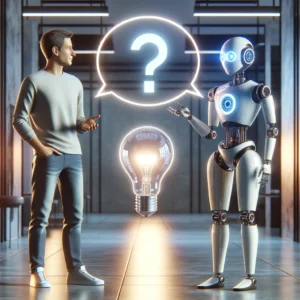 On the other hand, AI-powered chatbots leverage artificial intelligence and machine learning to provide more sophisticated and dynamic interactions. These chatbots can understand natural language, interpret user intent, and generate responses based on context and previous interactions. They can handle a wider range of topics, adapt to user preferences, and continuously improve their performance through learning algorithms.
On the other hand, AI-powered chatbots leverage artificial intelligence and machine learning to provide more sophisticated and dynamic interactions. These chatbots can understand natural language, interpret user intent, and generate responses based on context and previous interactions. They can handle a wider range of topics, adapt to user preferences, and continuously improve their performance through learning algorithms.
AI-powered chatbots are more complex to develop but offer a more engaging and human-like conversational experience. The choice between rule-based and AI-powered chatbots depends on the application’s specific requirements, such as the domain’s complexity, the level of personalization needed, and the available resources for development and maintenance.
Key Components of Chatbot Development
Natural Language Processing (NLP)
Natural Language Processing (NLP) is a branch of artificial intelligence that focuses on the interaction between computers and human language. It enables chatbots to understand, interpret, and generate human-like responses in natural language. NLP techniques involve various tasks, such as tokenization, part-of-speech tagging, named entity recognition, sentiment analysis, and language translation.
In chatbot development, NLP plays a crucial role in processing user inputs, extracting relevant information, and determining the intent behind the user’s message. It allows chatbots to handle a wide range of language variations, interpret context, and provide accurate and relevant responses. NLP algorithms can also help chatbots handle ambiguity, resolve anaphora (referring back to previously mentioned entities), and generate coherent and grammatically correct outputs.
Some common NLP techniques used in chatbot development include:
Tokenization: Breaking down user inputs into individual words or phrases.
Part-of-speech tagging: Identifying the grammatical role of each word in a sentence.
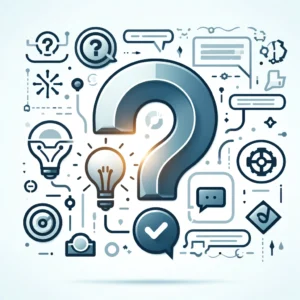 Named Entity Recognition (NER): Identifying and classifying named entities such as people, organizations, and locations.
Named Entity Recognition (NER): Identifying and classifying named entities such as people, organizations, and locations.
Sentiment Analysis: Determining the emotional tone or sentiment behind user messages.
Language Translation: Converting user inputs from one language to another. By leveraging NLP, chatbots can engage in more natural and human-like conversations, accurately understand user intent, and provide relevant and contextually appropriate responses.
Dialogue Management
Dialogue Management is a key component of chatbot development that focuses on controlling the flow and structure of the conversation between the user and the chatbot. It involves designing and implementing strategies to guide the conversation, maintain context, handle user responses, and ensure a coherent and engaging interaction.
The main tasks of Dialogue Management include:
Conversation Flow Design: Defining the overall structure and flow of the conversation, including the different paths and outcomes based on user inputs and the chatbot’s goals.
Context Tracking: Maintaining and updating the context of the conversation, keeping track of the user’s previous messages, and using this information to provide relevant and personalized responses.
Intent Recognition: Identifying the user’s intent or purpose behind their message using Natural Language Processing (NLP) techniques and mapping it to the appropriate response or action.
User Experience (UX) design in chatbots
User Experience (UX) design is crucial in chatbot development, focusing on creating engaging, intuitive, and satisfying interactions between users and chatbots. The goal is to ensure that users can easily navigate the conversation, find information, and accomplish their goals with minimal friction.
Key aspects of UX design in chatbots include:
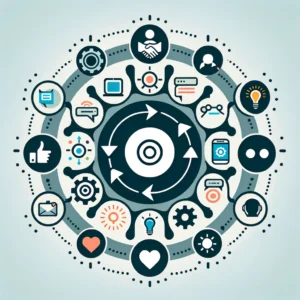 Conversation Design: Crafting natural, human-like dialogue that aligns with the chatbot’s purpose and user expectations.
Conversation Design: Crafting natural, human-like dialogue that aligns with the chatbot’s purpose and user expectations.
User Interface (UI) Design Involves Creating intuitive and visually appealing visual elements, such as buttons and menus, to guide users through the conversation.
Onboarding and Guidance: Providing clear instructions and guidance to help users understand the chatbot’s capabilities and how to interact with it effectively.
Error Handling and Fallback Strategies: We must design graceful ways to handle situations where the chatbot doesn’t understand the user’s input or when the conversation goes off-track.
Personalization and Context Awareness: The chatbot’s responses should incorporate personalization and context awareness based on user preferences and previous interactions.
Accessibility and Inclusivity: Ensuring the chatbot is accessible to users with diverse needs and abilities.
Integration with external systems and APIs
Integration with external systems and APIs is crucial in chatbot development, as it enables chatbots to access and leverage data and functionality from various sources, enhancing their capabilities and providing more comprehensive and personalized user experiences.
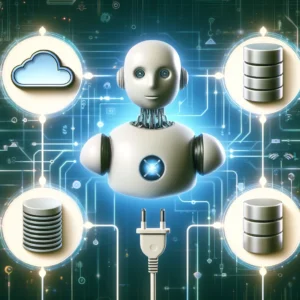 By integrating with external systems, such as customer relationship management (CRM) platforms, enterprise resource planning (ERP) systems, or databases, chatbots can retrieve and update relevant information in real time. This allows them to provide users with up-to-date and accurate information, streamline processes, and automate tasks.
By integrating with external systems, such as customer relationship management (CRM) platforms, enterprise resource planning (ERP) systems, or databases, chatbots can retrieve and update relevant information in real time. This allows them to provide users with up-to-date and accurate information, streamline processes, and automate tasks.
API integration enables chatbots to connect with third-party services and platforms, expanding their functionality and offering additional features to users. Some common examples include:
CRM Integration: Accessing customer data and interaction history to provide personalized assistance.
ERP Integration: Retrieving and updating information related to inventory, orders, and shipping.
Knowledge Base Integration: Connecting to a company’s knowledge base or FAQ database to provide relevant information.
Payment Gateway Integration: Allowing users to make purchases and manage transactions through the chatbot interface.
Chatbot Development Platforms and Tools
Overview of popular chatbot development platforms
Several popular chatbot development platforms are available. These platforms offer a range of features and tools to help businesses and developers create, deploy, and manage chatbots. These platforms vary in terms of their complexity, pricing, and target audience, catering to different levels of technical expertise and business requirements.
Some of the most popular chatbot development platforms include:
Dialogflow: Developed by Google, Dialogflow is a comprehensive platform that uses natural language processing (NLP) to help build and deploy conversational interfaces across various channels.
 IBM Watson Assistant: Part of the IBM Watson suite, Watson Assistant is an AI-powered chatbot development platform that enables businesses to create and deploy chatbots across multiple channels.
IBM Watson Assistant: Part of the IBM Watson suite, Watson Assistant is an AI-powered chatbot development platform that enables businesses to create and deploy chatbots across multiple channels.
Microsoft Bot Framework: This cross-platform framework allows developers to build, test, and deploy chatbots using various programming languages and tools.
Amazon Lex is a service provided by Amazon Web Services (AWS) that enables developers to build conversational interfaces using voice and text.
Choosing the right platform for your needs
Choosing the right chatbot development platform for your needs is a crucial decision that can impact the success of your chatbot project. When selecting a platform, consider factors such as your business requirements, target audience, available resources, and the level of technical expertise within your team.
Here are some key considerations when choosing a chatbot development platform:
Functionality and Features: Assess the platform’s capabilities in terms of natural language processing (NLP), dialogue management, and integration with external systems and APIs. Ensure that the platform offers the features and functionality necessary to build the type of chatbot you envision.
Ease of Use and Learning Curve: Consider the platform’s user-friendliness and the learning curve involved in getting started. Some platforms offer visual builders and pre-built templates, making it easier for non-technical users to create chatbots, while others require more advanced programming skills.
Scalability and Performance: Evaluate the platform’s ability to handle a growing number of users and conversations, as well as its performance in terms of response time and handling complex interactions. Ensure that the platform can scale to meet your future needs as your chatbot becomes more popular.
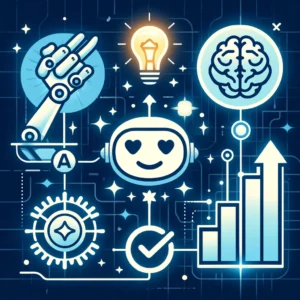 Integration Capabilities: Look for a platform that seamlessly integrates with your existing systems, such as CRM, ERP, or knowledge bases. Consider the platform’s API and SDK support, as well as its compatibility with the channels and platforms where you want to deploy your chatbot.
Integration Capabilities: Look for a platform that seamlessly integrates with your existing systems, such as CRM, ERP, or knowledge bases. Consider the platform’s API and SDK support, as well as its compatibility with the channels and platforms where you want to deploy your chatbot.
Pricing and Costs: Compare the pricing models and costs associated with different platforms, taking into account factors such as the number of conversations, users, or API calls. Consider any additional costs for hosting, maintenance, or support.
Community and Support: Assess the platform’s community and support ecosystem, including documentation, tutorials, forums, and customer support. A strong community and reliable support can be invaluable when you encounter challenges or need guidance during the development process.
Security and Compliance: Ensure that the platform meets your security and compliance requirements, particularly if you handle sensitive user data or operate in regulated industries. Look for features like data encryption, user authentication, and compliance certifications.
Best practices for using chatbot development tools
When using chatbot development tools, it’s essential to follow best practices to ensure that your chatbot is effective, user-friendly, and aligned with your business goals. Here are some key best practices to keep in mind:
Define Clear Objectives: Before starting development, clearly define the purpose and goals of your chatbot. Identify the key use cases, target audience, and desired outcomes to guide your chatbot’s design and functionality.
Design for User Experience: When designing your chatbot, prioritize user experience (UX). Create a conversational flow that is intuitive, easy to navigate, and aligned with your brand’s tone and personality. Use clear and concise language and provide helpful prompts and guidance to users.
Leverage Natural Language Processing (NLP): Use the NLP capabilities offered by your chosen platform to enhance your chatbot’s ability to understand and respond to user inputs. Train your NLP model with relevant examples and continuously refine it based on user interactions.
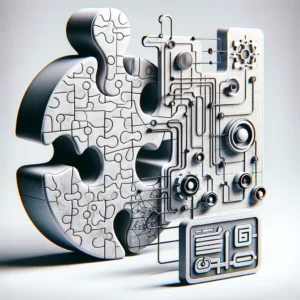 Implement Robust Error Handling: Plan for scenarios where your chatbot may not understand a user’s input or when the conversation goes off-track. Implement graceful error-handling techniques, such as providing clarifying questions, suggesting alternative actions, or redirecting users to human support when necessary.
Implement Robust Error Handling: Plan for scenarios where your chatbot may not understand a user’s input or when the conversation goes off-track. Implement graceful error-handling techniques, such as providing clarifying questions, suggesting alternative actions, or redirecting users to human support when necessary.
Test and Iterate: Thoroughly test your chatbot before deploying it to ensure that it functions as intended and provides a smooth user experience. Conduct user testing and gather feedback to identify areas for improvement. Continuously monitor and analyze chatbot performance and make iterative improvements based on user insights.
Integrate with Backend Systems: Integrate your chatbot with relevant backend systems, such as CRM, ERP, or knowledge bases, to provide personalized and context-aware responses. Ensure that the integration is secure and reliable and that data is properly synchronized between the chatbot and the backend systems.
Monitor and Analyze Performance: Regularly monitor and analyze your chatbot’s performance using metrics such as engagement rates, conversation completion rates, and user satisfaction scores. Use these insights to identify areas for optimization and to make data-driven decisions for improving your chatbot’s effectiveness.
Ensure Security and Privacy: Implement strong security measures to protect user data and ensure compliance with relevant regulations, such as GDPR or HIPAA. Use secure authentication methods, encrypt sensitive data, and provide clear privacy policies to users.
Provide Human Escalation Options: Include options for users to easily escalate to human support when needed, such as Live Agent Handoff buttons or links to contact forms. Ensure a seamless transition between the chatbot and human support to maintain a positive user experience.
Designing Engaging Conversational AI Experiences
Crafting natural and intuitive conversation flows
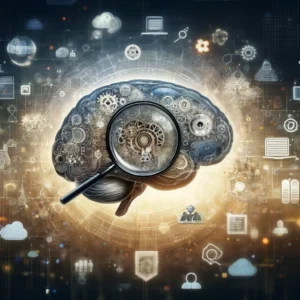 Crafting natural and intuitive conversation flows is crucial for designing effective and engaging chatbots. A well-designed conversation flow helps users easily navigate the chatbot, find information, and accomplish their goals with minimal friction. Here are some key best practices:
Crafting natural and intuitive conversation flows is crucial for designing effective and engaging chatbots. A well-designed conversation flow helps users easily navigate the chatbot, find information, and accomplish their goals with minimal friction. Here are some key best practices:
Define a clear purpose and goals for your chatbot to guide the conversation flow.
Use a conversational tone that aligns with your brand’s voice and personality.
Break down complex tasks into smaller, manageable steps with clear instructions and prompts.
Anticipate user needs and proactively address them throughout the conversation.
Handle errors gracefully, provide alternative suggestions, and offer fallback options.
Maintain context, provide confirmation messages, and allow users to review their inputs.
Incorporate personalization by leveraging user data and preferences.
Regularly test and iterate your conversation flow based on user feedback and data insights.
Keep responses concise and to the point to ensure quick and efficient interactions.
Incorporating personality and brand voice in chatbots
Incorporating personality and brand voice in chatbots is essential for creating engaging and memorable user experiences. By infusing your chatbot with a distinct personality that aligns with your brand’s values, tone, and style, you can make the conversation feel more natural, relatable, and enjoyable for users.
Here are some tips for incorporating personality and brand voice in your chatbot:
Define Your Brand Persona: Develop a clear understanding of your brand’s persona, including its values, tone, and communication style.
Use Consistent Language: Ensure that your chatbot’s language and tone are consistent with your brand’s overall communication style.
Inject Humor and Wit: If appropriate for your brand, consider injecting humor and wit into your chatbot’s responses.
Show Empathy and Emotional Intelligence: Design your chatbot to demonstrate empathy and emotional intelligence when interacting with users. By incorporating personality and brand voice into your chatbot, you can create a more engaging and memorable experience for users, fostering stronger connections and loyalty to your brand.
Best practices for handling user input and providing relevant responses?
When designing chatbots, it’s crucial to follow best practices for handling user input and providing relevant responses to ensure a smooth and satisfactory user experience. Here are some key considerations:
Anticipate User Intents: Analyze and anticipate the various intents and goals users may have when interacting with your chatbot. Develop a comprehensive set of intents and map them to appropriate responses and actions.
Use Natural Language Processing (NLP): Leverage NLP techniques to better understand and interpret user input, including handling variations in phrasing, spelling, and grammar. This allows your chatbot to accurately identify the user’s intent and provide relevant responses.
Handle Ambiguity and Clarify Intent: When user input is ambiguous or unclear, design your chatbot to ask clarifying questions or provide options for the user to select from. This helps narrow down the user’s intent and ensures that the chatbot provides accurate and relevant responses.
Provide Concise and Clear Responses: Ensure that your chatbot’s responses are concise, clear, and to the point. Avoid lengthy or overly complex explanations that may confuse or overwhelm users. Use simple language and break down information into easily digestible chunks.
Implementing and Deploying Your Chatbot
Steps involved in chatbot implementation?
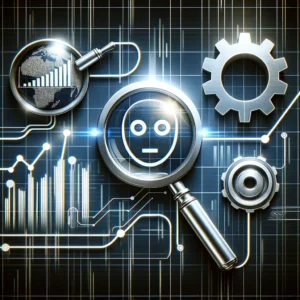 Implementing a chatbot involves several key steps to ensure a successful deployment and effective performance. Here’s an overview of the main steps involved in chatbot implementation:
Implementing a chatbot involves several key steps to ensure a successful deployment and effective performance. Here’s an overview of the main steps involved in chatbot implementation:
Define Objectives and Requirements: Clearly define the goals and objectives of your chatbot project. Identify the specific use cases, target audience, and desired outcomes. Gather requirements from stakeholders and potential users to ensure the chatbot aligns with their needs and expectations.
Design the Conversation Flow: Create a detailed conversation flow that outlines the various paths and interactions users can have with the chatbot. Consider the different intents, entities, and contexts that the chatbot should handle. Design the flow to be intuitive, natural, and aligned with your brand’s voice and tone.
Choose a Chatbot Platform: Select a chatbot development platform that suits your requirements, technical expertise, and budget. Consider factors such as the platform’s NLP capabilities, integration options, scalability, and ease of use. Some popular platforms include Dialogflow, IBM Watson Assistant, and Microsoft Bot Framework.
Develop and Train the Chatbot: Use the chosen platform to develop your chatbot, defining intents, entities, and dialog flows. Train the chatbot’s NLP model with relevant examples and variations of user input to improve its understanding and accuracy. Implement error handling, fallback responses, and integrations with backend systems as needed.
Test and Refine: Thoroughly test the chatbot to ensure it functions as intended and provides a smooth user experience. Conduct both functional and usability testing, covering various scenarios and edge cases. Gather feedback from test users and iterate on the chatbot’s design and functionality based on their input.
Deploy and Integrate: Deploy the chatbot on the desired channels, such as websites, messaging platforms, or voice assistants. Integrate the chatbot with your existing systems, such as CRM, knowledge bases, or payment gateways, to enable seamless data exchange and personalized interactions.
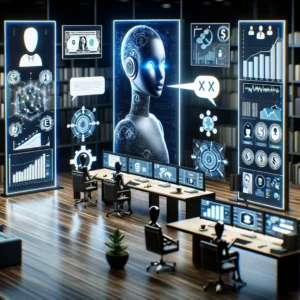 Monitor and Maintain: Continuously monitor the chatbot’s performance and user interactions. Track key metrics such as engagement rates, completion rates, and user satisfaction scores. Regularly maintain and update the chatbot to fix bugs, improve performance, and add new features based on user feedback and evolving requirements.
Monitor and Maintain: Continuously monitor the chatbot’s performance and user interactions. Track key metrics such as engagement rates, completion rates, and user satisfaction scores. Regularly maintain and update the chatbot to fix bugs, improve performance, and add new features based on user feedback and evolving requirements.
Optimize and Scale: Analyze the data collected from chatbot interactions to identify areas for optimization. Use machine learning techniques to improve the chatbot’s understanding, personalization, and efficiency over time. Scale the chatbot infrastructure to handle increasing traffic and ensure reliable performance.
Integrating chatbots with messaging platforms and websites
Integrating chatbots with messaging platforms and websites is a crucial step in making them accessible and convenient for users. By embedding chatbots into popular messaging apps like Facebook Messenger, WhatsApp, or Slack, businesses can meet users where they already spend a significant amount of time, reducing friction and increasing engagement.
Similarly, integrating chatbots into websites allows visitors to quickly access information, get support, or complete tasks without navigating through multiple pages or filling out forms. This seamless integration enhances the user experience and can lead to higher conversion rates and customer satisfaction.
Developers typically use the platform’s respective APIs and SDKs to integrate chatbots with messaging platforms. These tools provide the necessary frameworks and guidelines for building and deploying chatbots within the messaging environment. Developers can leverage the platform’s features, such as buttons, menus, and media sharing, to create rich and interactive conversations.
When integrating chatbots into websites, developers have several options. They can embed the chatbot as a widget or a floating button that appears on specific pages or throughout the entire website. This allows users to easily initiate a conversation with the chatbot without leaving the webpage they are on. Developers can use web technologies like HTML, CSS, and JavaScript to create the chatbot interface and integrate it seamlessly with the website’s design and branding.
 Developers often use webhooks or APIs to enable communication between the chatbot and the website. Webhooks allow the chatbot to send and receive data from the website in real time, enabling dynamic interactions and personalized responses based on user actions or website content. APIs, on the other hand, enable the chatbot to retrieve data from the website’s backend systems, such as product information, user profiles, or transaction history.
Developers often use webhooks or APIs to enable communication between the chatbot and the website. Webhooks allow the chatbot to send and receive data from the website in real time, enabling dynamic interactions and personalized responses based on user actions or website content. APIs, on the other hand, enable the chatbot to retrieve data from the website’s backend systems, such as product information, user profiles, or transaction history.
When integrating chatbots with messaging platforms or websites, security and privacy aspects must be considered. Developers should follow best practices for authentication, data encryption, and user consent management to protect user information and ensure compliance with relevant regulations.
Testing, monitoring, and optimizing chatbot performance
Testing, monitoring, and optimizing chatbot performance are essential practices to ensure that chatbots effectively serve their intended purpose and provide a positive user experience. Thorough testing should be conducted before launching the chatbot to identify and fix any bugs, errors, or inconsistencies in the conversation flow. This includes functional testing to verify that the chatbot responds accurately to user inputs, as well as usability testing to assess the ease of use and overall user experience.
Once the chatbot is deployed, continuous monitoring is crucial to track its performance and identify areas for improvement. Key metrics to monitor include engagement rates, completion rates, user satisfaction scores, and error rates. By analyzing these metrics, developers can gain insights into how users interact with the chatbot and identify potential bottlenecks or pain points.
Monitoring should also involve keeping an eye on user feedback and sentiment. Encouraging users to provide feedback through the chatbot itself or through other channels can help gather valuable insights into what works well and what needs improvement.
FAQ
What is the difference between rule-based and AI-powered chatbots?
- Rule-based chatbots follow predefined rules and scripts, while AI-powered chatbots use NLP and ML to understand and respond to user input more naturally and dynamically.
How long does it take to develop a chatbot?
- The development time depends on the complexity of the chatbot, ranging from a few weeks for simple rule-based bots to several months for advanced AI-powered chatbots with multiple integrations.
Can chatbots be integrated with existing systems and databases?
- Yes, chatbots can be integrated with various systems, such as CRM, ERP, and databases, to access and update information, enabling seamless interactions and personalized experiences.
How do I choose the right chatbot development platform for my business?
- When selecting a chatbot development platform that aligns with your business needs and goals, consider factors such as ease of use, scalability, NLP capabilities, integration options, and pricing.
What are the key metrics to measure chatbot performance and success?
Key metrics include user engagement, conversation completion rate, user satisfaction, error rate, and conversion rate, which help assess the effectiveness and impact of your chatbot.
Conclusion
Chatbot development is an exciting and rapidly evolving field that combines AI, NLP, and UX design to create intelligent, engaging, and efficient conversational experiences. By understanding the fundamentals of chatbot development, leveraging the right tools and platforms, and following best practices, businesses can harness the power of conversational AI to enhance customer support, streamline processes, and drive growth. At Yeti Digital Services Ltd, our expertise in chatbot creation enables us to deliver cutting-edge solutions tailored to your unique needs, helping you stay ahead in the digital landscape.
